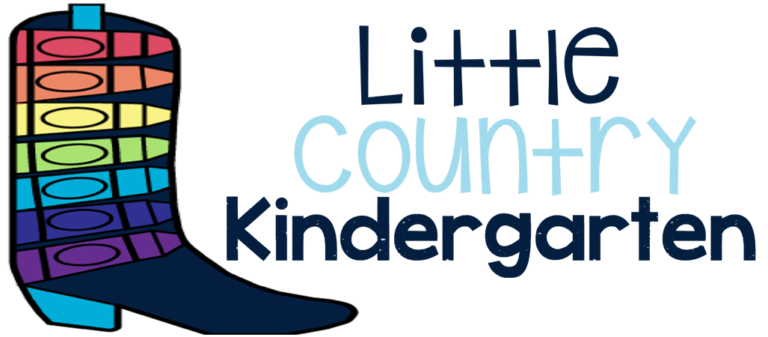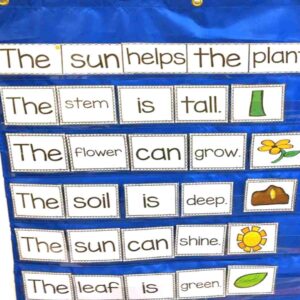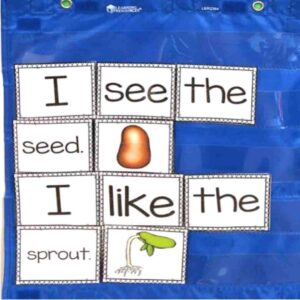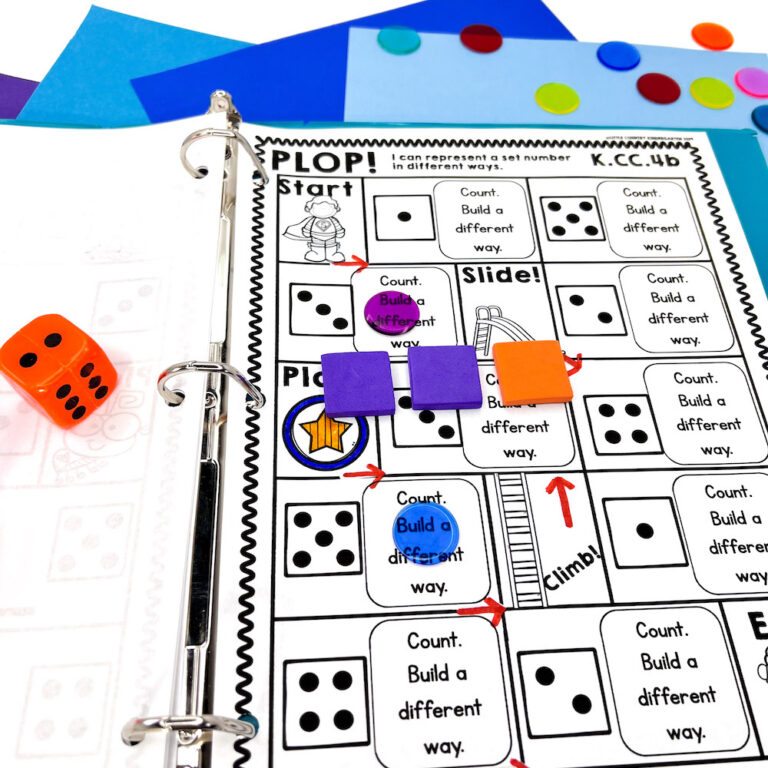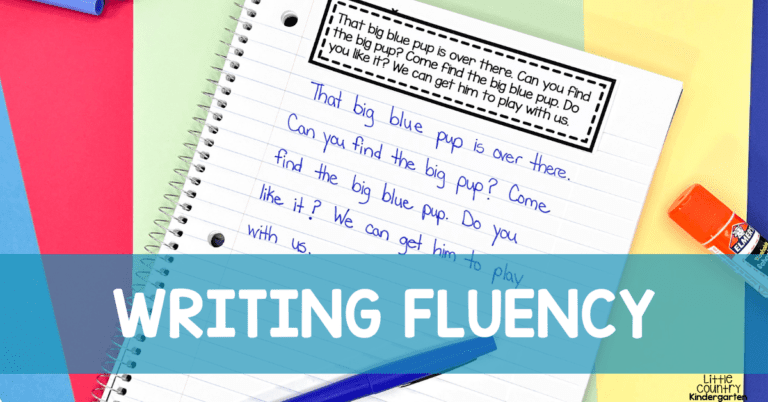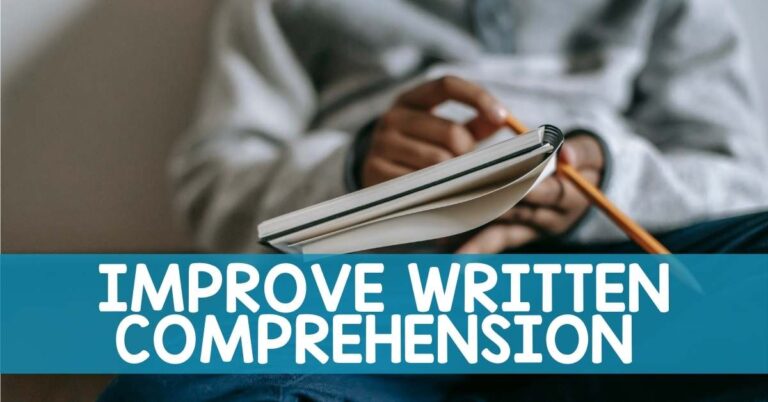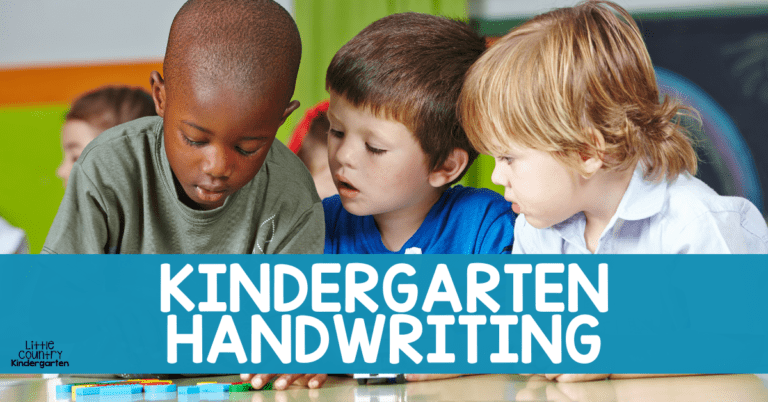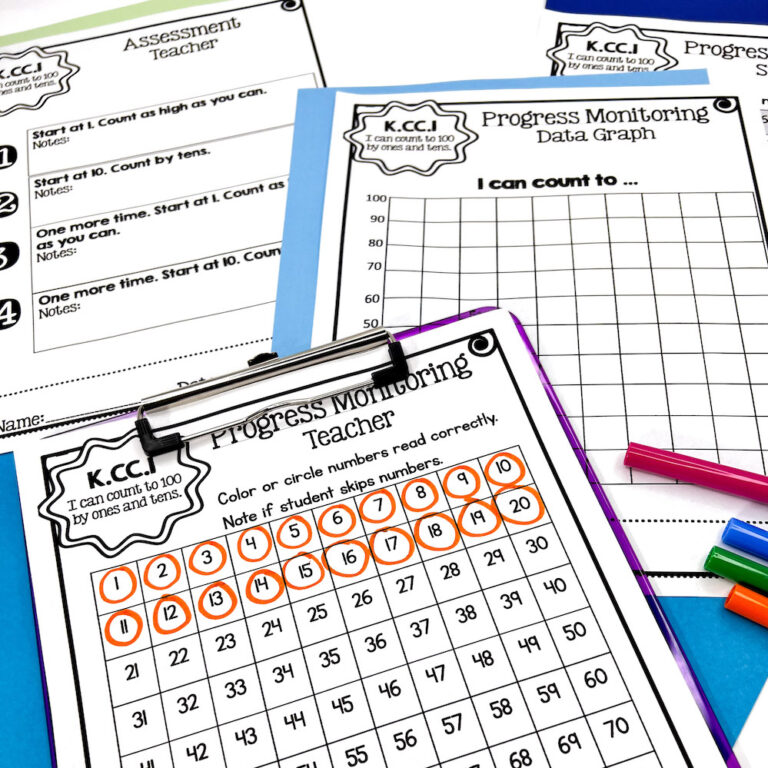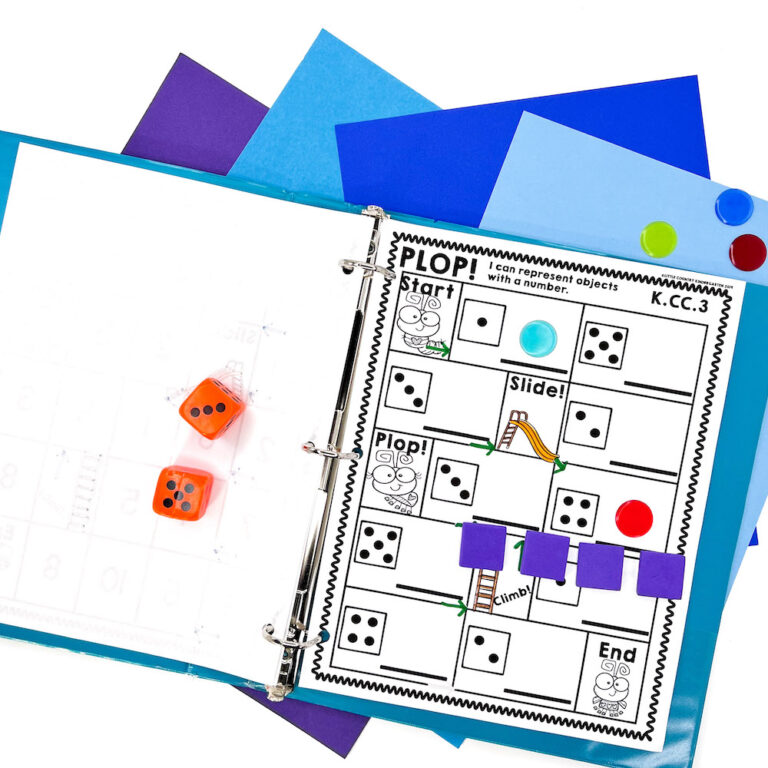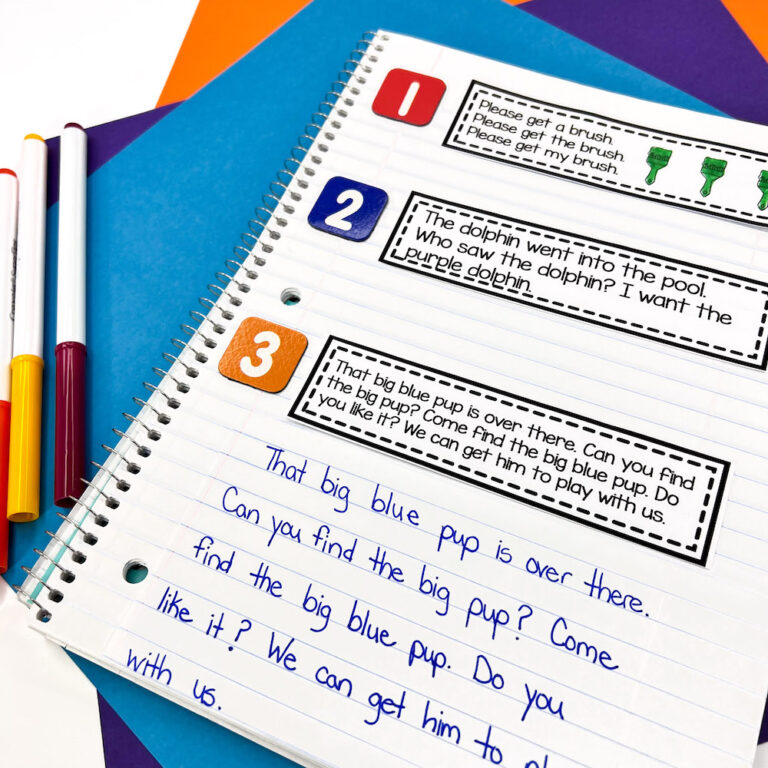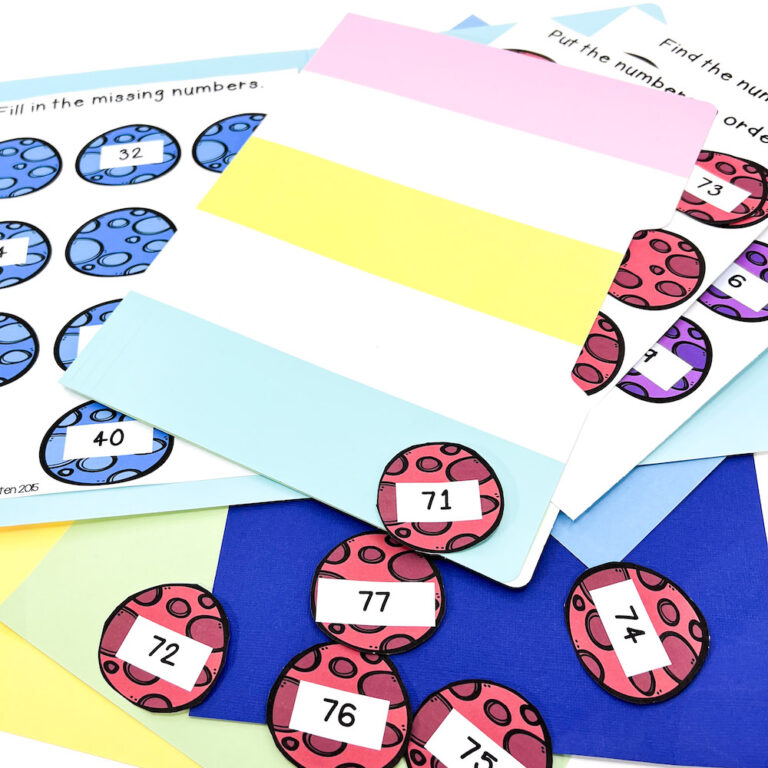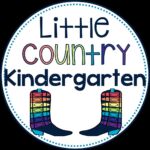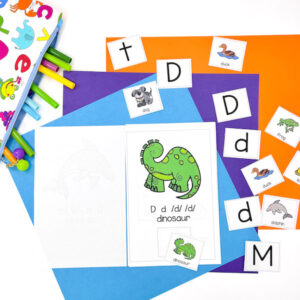You’ve focused so hard on teaching your students letter sounds and letter names. They are writing letters and working on sounding out words using inventive spelling. But wait, how do you teach them sentence structure too? There’s just too many things to focus on! There’s a lot involved in writing, but you can tackle teaching sentences for kindergarten.
Teaching Sentences is Developmentally Appropriate!
It’s totally normal for students to struggle differentiating the difference in letters, words, and sentences. Many students come in to kindergarten without any type of pre academic skills and you have to teach them those basics before you can even begin working towards the kindergarten standards. While you know you want to tackle teaching sentences and teaching sentence structure, remember how far your students have already come!
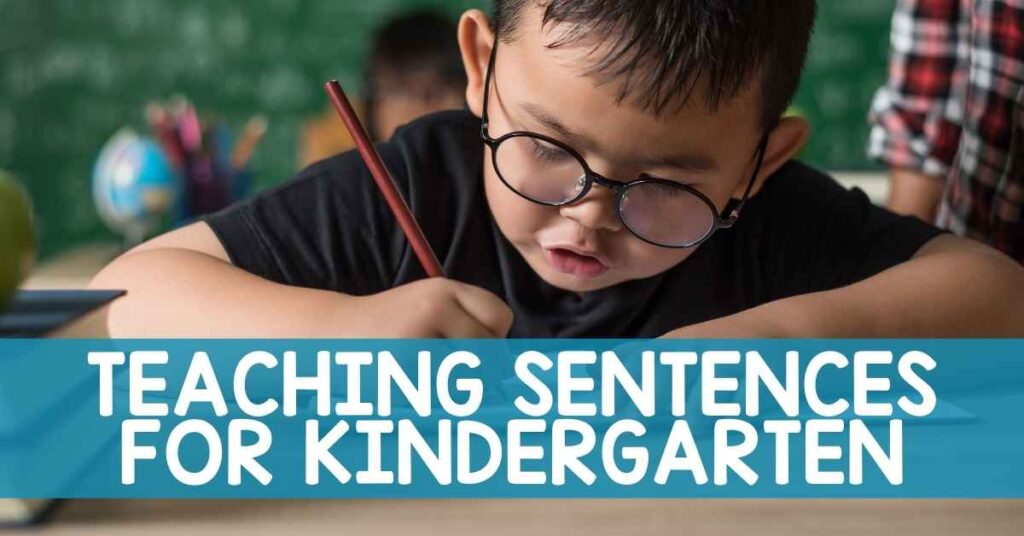
How to get from Teaching Letters to Teaching Sentences?
Your students know how to write individual letters and are getting more confident putting their thoughts down on paper. Now you probably have students all over the place in the understanding of writing process.
Some are still running all of their letters together, not understanding the difference between letters and words. Others may be writing random words instead of focusing on writing complete thoughts, not understanding the difference in words or phrases and sentences. You probably also have some that are so close but are missing those little linking words like “is” to finish their complete sentence. With time, modeling, and some fun hands on practice, your students will understand how to write a sentence soon!
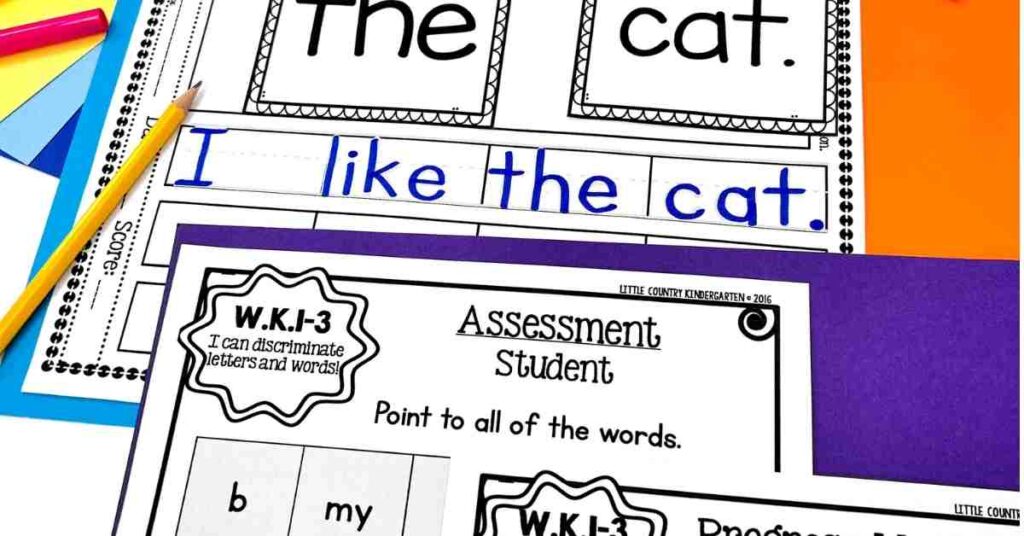
Teaching Sentences for Kindergarten with Pocket Charts
Pocket chart activities are one of my favorite things to include in my reading and writing routine! I love using my magnetic pocket chart to show things on the whiteboard and then table top pocket charts for students to use during centers or even carry to their seat to help them with their individual writing.
Model Sentences
When I use pocket chart sentences I start off by modeling the sentences whole group. We talk about how we know some words should be at the beginning because they have capital letters and how others should be at the end because they have punctuation. We also discuss how each word is on its own card. This is easy for students to understand that the letters on that card make a word and that each word goes together to make a sentence. It’s a helpful strategy for my students that are still having difficulty discriminating between words, letters, and sentences.
Reading Sentences
After we discuss what makes these sentences complete sentences I will read them together with the class. Then I will take out some of the small words such as in the sentence “Rabbits are furry” I would take out the word “are” and read “Rabbits furry.” We would then discuss if that was a complete sentence and why the little linking word is important to make the sentence complete. I like to read the incomplete sentences like a robot and talk about how we don’t want to write like robots.
Building Sentences
Then I pass out the word cards to my students and we practice building the sentences again as a class. We build each sentence one at a time, read it, and then move on to the next. This will then become a center for them. In the center they can build the sentence, read it to make sure it makes sense, and then copy the sentence in their writing journal. The individual word cards are a nice prompt to remind students to leave spaces between their words!
Writing Sentences
Students who are at a higher stage of the writing process can use these model sentences as sentence starters and write their own similar sentences on the same topic. I also include different levels of sentences such as simple “I see” and “I like”, more difficult informational and descriptive sentences, and a longer challenge sentence. My students love seeing our new weekly sentences when we get our new vocabulary for the week!
Writing Sentences Takeaways
Teaching sentence structure is probably one of the hardest things in kindergarten. There is so much to focus on and help them master during the year. However with patience, time, and lots of modeling, you can be teaching sentences for kindergarten confidently and successfully!
Model with FREE Pocket Chart Sentences Today!
Grab these 8 pocket chart sentences to use in your classroom. Model during your morning meeting or writing lesson. Read the sentences with your class and have fun watching them unscramble and build them correctly. Challenge students by having them copy the sentences and then create their own depending on their currently abilities. Have fun teaching sentences for kindergarten and integrating science with these mixed up sentences focusing on the plant life cycle!
